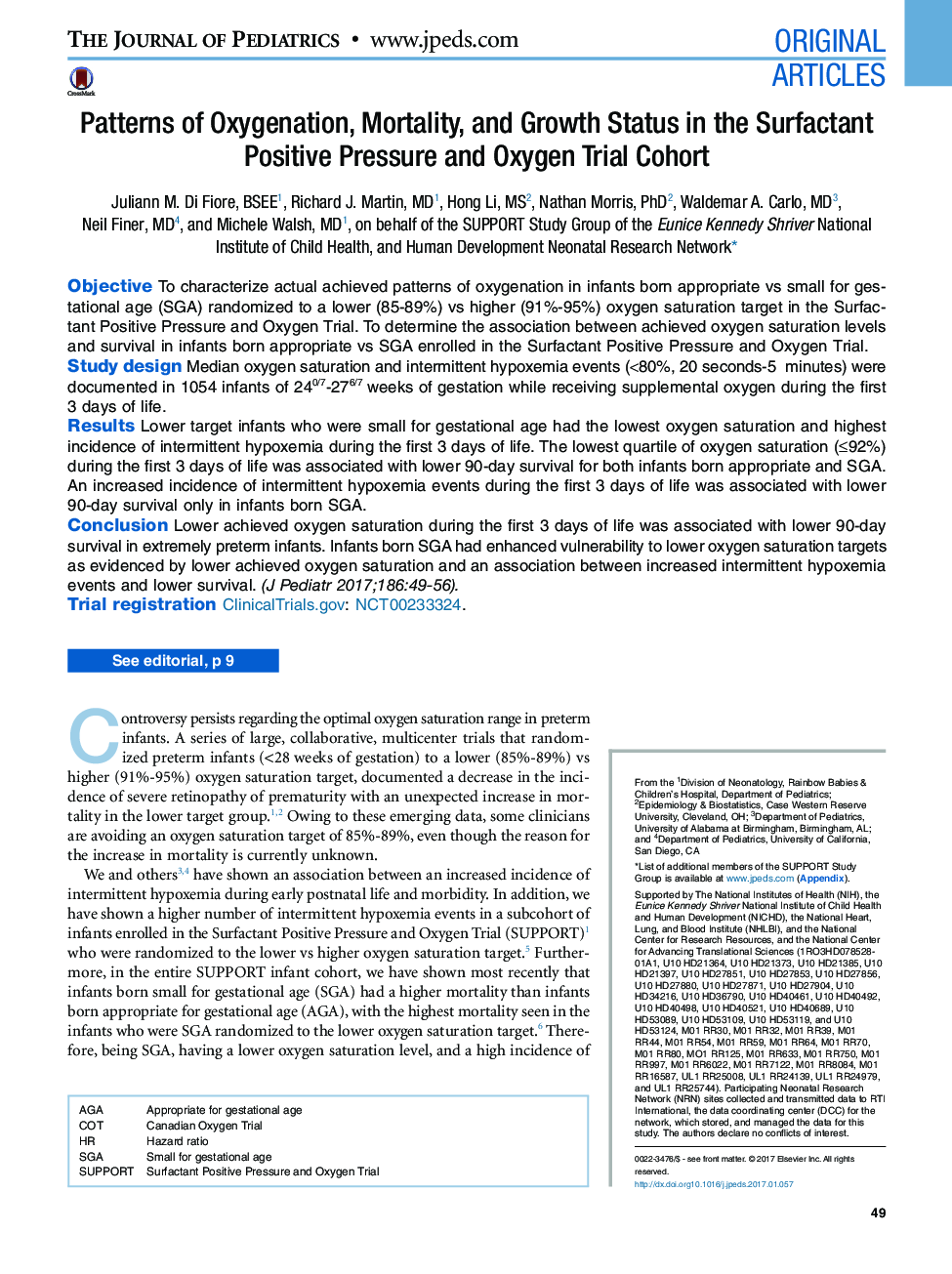| Article ID | Journal | Published Year | Pages | File Type |
|---|---|---|---|---|
| 5719437 | The Journal of Pediatrics | 2017 | 9 Pages |
ObjectiveTo characterize actual achieved patterns of oxygenation in infants born appropriate vs small for gestational age (SGA) randomized to a lower (85-89%) vs higher (91%-95%) oxygen saturation target in the Surfactant Positive Pressure and Oxygen Trial. To determine the association between achieved oxygen saturation levels and survival in infants born appropriate vs SGA enrolled in the Surfactant Positive Pressure and Oxygen Trial.Study designMedian oxygen saturation and intermittent hypoxemia events (<80%, 20âseconds-5â minutes) were documented in 1054 infants of 240/7-276/7âweeks of gestation while receiving supplemental oxygen during the first 3 days of life.ResultsLower target infants who were small for gestational age had the lowest oxygen saturation and highest incidence of intermittent hypoxemia during the first 3 days of life. The lowest quartile of oxygen saturation (â¤92%) during the first 3 days of life was associated with lower 90-day survival for both infants born appropriate and SGA. An increased incidence of intermittent hypoxemia events during the first 3 days of life was associated with lower 90-day survival only in infants born SGA.ConclusionLower achieved oxygen saturation during the first 3 days of life was associated with lower 90-day survival in extremely preterm infants. Infants born SGA had enhanced vulnerability to lower oxygen saturation targets as evidenced by lower achieved oxygen saturation and an association between increased intermittent hypoxemia events and lower survival.Trial registrationClinicalTrials.gov: NCT00233324.
